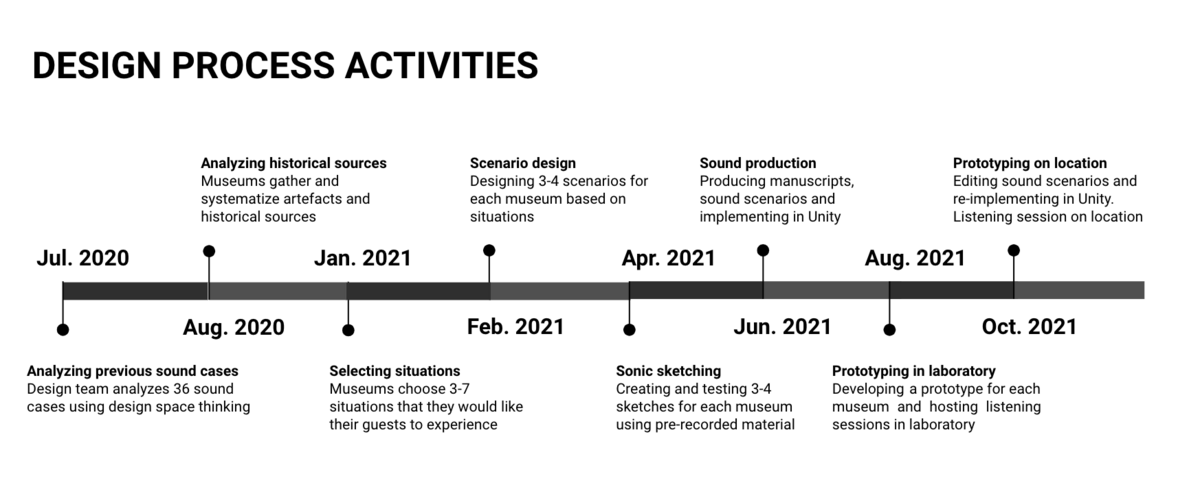
The process unfolded over a 1,5 year period and consisted of 8 main design activities. The first phase focused on revealing the buildings’ intangible sonic heritage, which was done in two ways: by applying design space analysis (Haskov & Lundquist, 2021) conducted by the design team, and through historical source analysis conducted by the museums. This knowledge was then used to develop situations and scenarios, which helped us communicate and engage with different ways of conveying cultural heritage through sound. From here, the ideas were transformed into sonic sketches, followed by soundscape prototypes before the final soundscape designs were created.
CAVI works within research fields that offer theory and methods that can create the framework for a common language, so that the museum’s vision and historical knowledge can be included in the development of the soundscapes. Our aim was therefore to develop specific methods to incorporate sound as material in the design process. Here, we draw on an interdisciplinary approach between design thinking and sound studies to develop a method for developing sonic placemaking through design space thinking (Udsen & Halskov, 2022).